From Pre-Colonial Roots to Independence: The Economic and Geopolitical History of Sudan Part I
A country doomed to be divided at the start
As of 2024, which country has the largest population of internal refugees? Which country has the highest number of people facing famine? Which country has the most mass death in the modern day? Where do aid agencies have the biggest amount of aid to distribute to, but don’t nearly have enough funding to support the population?
If you guessed Gaza, Haiti, Congo, or Ukraine you are wrong. The answer to all four of these answers is Sudan. They had no harvest in 2023, cereal production collapsed, over 150K are dead, and due to the war, the Sudanese pound plummeted making food imports rise by over 83%.
*August 2025 Update: The Preparatory Committee of the Sudanese Doctors Syndicate revealed in January 2025 that more than half a million infants have died due to malnutrition & starvation.

Sudan, an Afro-Arab country in Northeast Africa, has a population of ~50M as of 2024. Covering a vast area, Sudan is half the size of the European Union or roughly equivalent to Alaska.
The name "Sudan" comes from the Arab phrase "Bilad al-Sudan," meaning "land of the Blacks," historically referring to any African land south of the Sahara. The capital is Khartoum, and the largest city is Omdurman (“om-door-mahn”). In terms of ethnic affiliation, the vast majority are Arabs; then there’s Nubians, Beja, Fur, Dinka, and Zaghawa (who also live in Chad). Most of the inhabitants are Muslim. In the United States, all Sudanese would be considered black, but within Sudan, there was a historical divide between the Muslim, Arab-identifying Africans in north and the darker-skinned, Christian south which seceded as the new nation of South Sudan in 2011. Additionally, Western Sudan, known as Darfur, is as large as France and home to around 100 tribes.
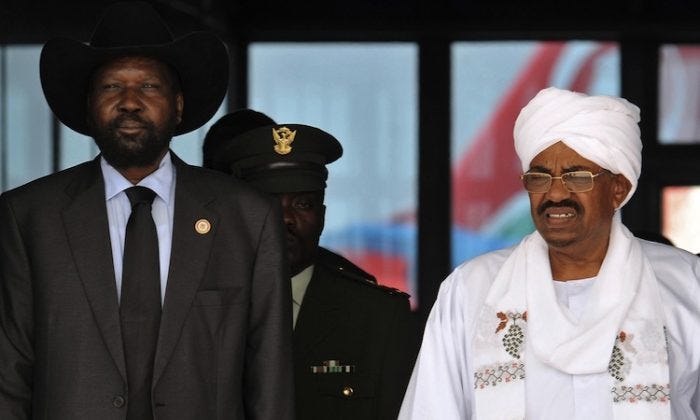
The northern region of Sudan is arid and desert-like, while the south features lush rainforests, oil fields, and highlands. Near Khartoum, the Blue Nile and White Nile converge to form the Nile River. Sudan benefits from abundant sunlight and freshwater resources. Agriculture is the second-largest sector after gold, which is found in Darfur, northeastern, and central Sudan. In 2022, Sudan was the 9th largest gold exporter in Africa, with exports valued at $2.32 billion. Sudan has legal and illegal artisanal mining. Illegal artisanal mining leads to significant gold smuggling, lack of record keeping and lost government revenue.
Industrial firms like Meroe Gold have ties to Russia's Wagner Group, now known as Africa Corps.
Sudan has been nearly bankrupt 11 times, in fact, it is in the middle of an IMF loan right now.
Sudan has had yoyos of economic growth when you look at Sudanese inflation adjusted incomes in USD.
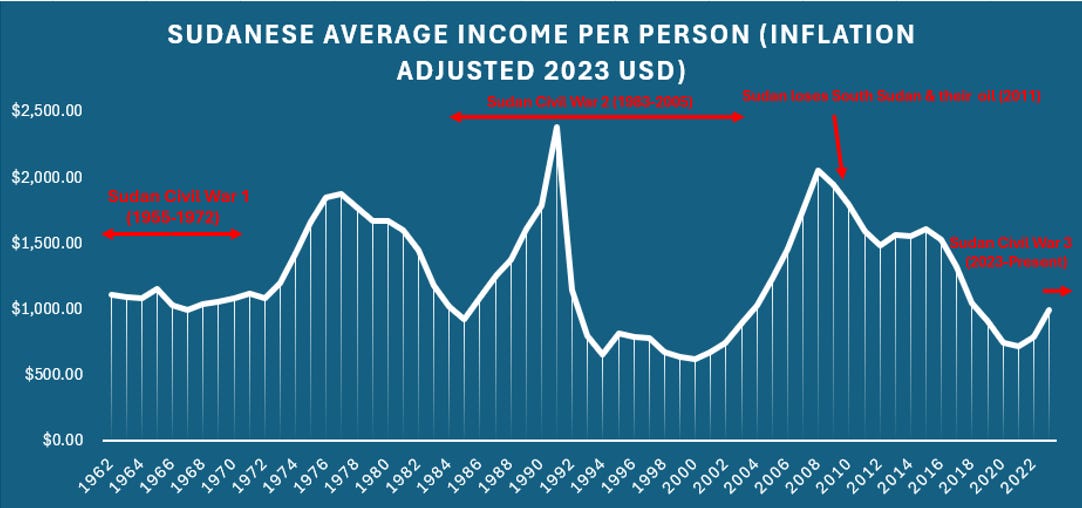
Sudan has faced a troubled history, marked by three civil wars and the loss of South Sudan, which held most of Sudan's oil wealth. As a result, the average Sudanese is poorer now than 60 years ago. Compared to its neighbors, Egypt or Libya, Sudan remains very poor. But Sudan was still richer than Central African Republic, Chad, and South Sudan pre- third civil war.
To compensate for the loss of oil revenue, Sudan is trying to rely on gold mining as a vital economic resource. However, gold mining hasn’t caught up to oil revenue.
Agriculture:
Sudan's agriculture is underperforming significantly. Its cereal yields (rice, wheat, corn, etc.) is worse than the "net food-importing developing country” average.
Pre-Colonial History of Sudan
Kerma (2500-1500 BC)
The Kerma Kingdom emerged in Nubia, encompassing present-day Lower Egypt and Northern Sudan. Kerma is arguably the first centralized Kingdom of Sub-Saharan Africa. The Egyptian elites referred to Kerma as “the wretched Kush”. The Egyptians sold grain to Kerma, while Kerma traded gold, ivory, incense, hides, jewelry and slaves.

Egyptian control of Kush/Kerma (1500 BC to 1070 BC)
Kerma was absorbed into the New Kingdom of Egypt from 1500 BC to 1070 BC thanks to Egyptian Pharaoh Thutmose I. Egypt divided Kerma into two regions: Northern Wawat, with its capital at Aswan (in Nubian South Egypt), and Southern Kush, with its capital Napata (in Nubian North Sudan, now known as Karima). The Egyptians imposed tributes of gold and slaves on the Kushites.
During this period, many Egyptians migrated to Kush, leading to the adoption of the Egyptian language and religion by the Kushites. By 1070 BC, internal conflicts weakened the New Kingdom of Egypt, enabling the Kushite elites to reclaim their territory and reestablish it as the Kingdom of Kush.
Kush Control of Egypt (750 BC to 654 BC)
From 750 BC to 654 BC, the Kushites ruled Egypt, transforming it into part of the Kush Kingdom, where the pharaohs were black.
This era lasted until the Assyrians invaded Egypt, forcing the Kushites back to Nubia.
By 590 BC, Egypt destroyed the Kushite capital of Napata, prompting the Kushites to relocate their capital further south to Meroe.
Meroe
While Egypt was dominated by Persians, Greeks, and Romans, Meroe managed to remain independent. Kush was isolated until the Meroitic Kingdom came to power.
Due to Egypt's constant occupation, Meroe, located in modern-day Sudan, preserved more Egyptian culture than the Egyptians themselves. The Meroitic rulers maintained the Pharaonic tradition and continued building pyramids.
Meroe developed a centralized political system, ironworking, ancient irrigation systems, and engaged in trade with Egyptians, Amazigh-Berbers, and Indians.
In 23 BC, Meroe attempted to expand into Rome's southern territory in Egypt. In response, a Roman commander attacked and destroyed the city of Napata. Although Rome considered colonizing Meroe, they abandoned the project, deeming it "too poor to warrant colonization."
Eventually, around 400 AD, the Aksumite Empire from Ethiopia conquered and briefly occupied Meroe.
Christian Nubia: Alodia, Nobotia, Makuria
In the 6th century AD, the remnants of Meroe fragmented into smaller states that became Christianized through trade with the Byzantines in Egypt. These Christian Afro-Byzantine kingdoms—Nobatia, Makuria, and Alodia—comprised the region known as Nubia.
When the Prophet Muhammad and his followers arrived in the 7th century AD. After the Prophet died, the Rashidun Caliphate conquered Egypt in 640 AD. The subsequent Umayyad Caliphate attempted to invade the Nubian kingdoms but failed, leading to the Baqt treaty. Under this agreement, Arabs from Egypt and Arabia traded grain and horses with the Nubians, who provided slaves, ivory, gold, and gum arabic. (This is how the Afro-Palestinian community was created for those wondering). Over centuries, Nubia gradually became Islamized and Arabized through trade, intermarriage, and travel.
Eventually, the Mamluks (Freed Turkish Slaves) took over Egypt attacked Nubia in 1276. By 1316, Egypt killed the last Christian King of Nubia.
The following Nubian Kings became Muslim, and their kingdoms were constantly raided to fuel Mamluk Egypt’s slave trade.
By the 14th century AD, Bedouin Arabs began settling in Sudan, further expanding trade with Egypt and accelerating the spread of Islam and Arab culture.
By the 15th century, most Sudanese, except those in the southern swamps and bogs, had converted to Islam. These challenging terrains prevented Arab armies from effectively Arabizing and Islamizing South Sudan, leaving it largely unaffected by these changes.
The Funj Sennar Sultanate (1504-1821)
By 1504, due to Arabization and Islamization through marriage and trade, the Christian Nubia had ceased to exist, giving rise to the Funj Sultanate of Sennar in Sudan.
The Funj state was a loose confederation of tribal chiefs and sultanates who paid tribute to the Sultan of Sennar. Their economy depended on slave trading, farming, and herding.
Also, Ottoman Turkey started to become the regional power. In 1517, Turkey conquered Egypt and started making the Funj closer to the Turko-Egyptian orbit.
In 1603, in modern day East Chad/West Sudan, the Fur people created an Islamic state called Darfur. The state was able to build mosques and import skilled workers by selling slaves to Ottoman Turkish Egypt.
Both the states of Darfur and Sennar enslaved Africans from the south, including the Dinka, Nuer, and Shilluk peoples. The enslavement of South Sudanese by northern Sudanese was a practice that predated European colonialism.
Turkish-Egyptian Rule of Sudan (1821-1885)
Egypt, nominally an Ottoman Turkish territory, expanded its control into Sub-Saharan Africa under the rule of Mohammed Ali Pasha. In 1821, Egypt conquered the Funj Sultanate, referring to this area as "the land of the Blacks" or Sudan.

This period of double colonialism (Turko-Egyptian) saw Egypt exerting control over Sudan, turning it into a slave state. Over 30,000 Sudanese were conscripted as slave soldiers for the Egyptian army, which used them to conquer Eritrea. Also Sudanese were sold in the Trans-Saharan and Indian Ocean slave trade. High taxes were levied on the Sudanese, and Egyptian migrants seized some Sudanese lands.
Egypt attempted to develop Sudan through state monopolies - trading slaves, ivory, and gum arabic. The slave trade was the most profitable business, but by 1860, British pressure forced Egypt to end the export of slaves. Despite this, internal slave raiding continued. Even the Sudanese were enslaving other Sub-Saharan Africans as well.
One of the saddest things of Turkish-Egyptian rule was that Egyptians destroyed many Nubian pyramids in Sudan.
By the 1870s, Egypt expanded its territories South (Upper Nile, Bahr al Ghazal, and Equatoria - modern day South Sudan) and West (Darfur). Although Egypt legally ceased enslaving Sudanese, northern Sudanese continued to enslave Southerners. Egypt also embarked on a modernization project, including the construction of the Suez Canal, and attempted to expand further into Africa. However, they failed to conquer all of Ethiopia, and their modernization projects left them heavily in debt to European creditors.
Egypt defaulted on its debts, leading to Britain and France taking control of the Suez Canal in 1876. Egypt's failed attempts to reclaim the canal culminated in Britain taking over Egypt by the 1880s.
The Mahdist Caliphate of Sudan (1881-1899)
By 1881, a new radical Islamic sect emerged to remove themselves from Egyptian rule. This sect was called Mahdism, where a Sudanese cleric, Muhammad Ahmad, who proclaimed himself the Mahdi (The Guided One) and launched a jihad and captured Darfur, Sennar, and other regions from the Egyptians.
During this period, the Arab North continued to enslave the African South, selling slaves for firearms. The Mahdists also attacked Ethiopia, Italian Eritrea, and Egypt. A coalition of Egypt, Britain, Italy, and Ethiopia eventually defeated the Mahdists.
British-Egyptian Rule of Sudan (1899-1955)
By 1882, Britain had taken Egypt away from Turkish control, and then Britain and Egypt jointly established the Anglo-Egyptian Condominium of Sudan in 1899. Britain technically abolished slavery, but it wasn’t enforced.
The civil service was dominated by the British, with Egyptians filling mid-level positions, and Sudanese holding lower-level jobs. The Mahdists attempted multiple rebellions, but were repeatedly quashed by British and Egyptian forces. The colonial administration operated through indirect rule, using local leaders to govern. Sheikhs managed the northern regions, while tribal chiefs governed the south.
Britain invested in infrastructure, focusing on connecting the Arab, Muslim North to Egypt. Schools were established in Khartoum, and most agricultural and railway developments were concentrated in the north and central regions. In contrast, the swampy, Animist South Sudan was left to autonomous rule with minimal investment, except for projects to expand cotton production in the Nuba Mountains & Equatoria and allowing missionaries to spread Christianity. The South (Upper Nile, Equatorial, Bahr al-Ghazal), was not united and consisted of various tribes like the Dinka, Nuer, and Shilluk, retained its culture but remained underdeveloped. Britain didn’t fully subdue the South until the early 1900s.
The North and South barely spoke to each other because, by law, Britain prevented the North from interacting with the South to prevent a united Mahdist revolt 2.0, prevent Islamization/Arabization of the South & preserve traditional African culture. Britain’s eventual goal was combining South Sudan in an East African Federation with Uganda, Kenya, and Tanzania, while Egypt would have North Sudan.
75% of the population lived in North “Afro-Arab Sudan” and 25% lived in South “Black Sudan”. Frankly, due to more technological sophistication, the Arabs thought they were more civilized than the Southerners. The Afro-Arab Sudanese referred the the South Sudanese as “abid”, which is Arabic for “slave”. The South Sudanese resented the North for enslaving them for centuries.
Economy:
The economy of colonial Sudan centered on exporting cotton, which accounted for over 50% of export revenue. Other exports included wheat, peas, sisal, hemp, coffee, and tea. Britain invested in irrigation systems (Sennar Dam, Gezira Canalization System, etc.) along the Nile to support cotton production, but forbade Sudan from developing manufacturing industries.
WW1 era: Post WW1, Arab Nationalism arose in Sudan. The Northern Arabs wanted to rule all of Sudan and Islamize/Arabize the South.
In 1922, Egypt gained nominal independence from Britain, but both maintained control over Sudan. South Sudan, comprising Equatoria, Bahr al-Ghazal, and Upper Nile, was a separate administrative region. In 1930, Britain relaxed its policy, allowing more interaction between North and South Sudan, promoting Arabic over English in the South, and permitting Islamic preaching.
WW2 era: Sudanese fought for Britain in WW2. Post WW2, Africans wanted more freedom. In 1947, a conference was made about the “One Sudan Policy”. Sudan promised South Sudan autonomy but this was never given. King Faroq of Egypt wanted control of Sudan, but after the Egyptian revolution by Gamal Abdul Nasser and Muhammed Naguib (Who was half Sudanese), they supported Sudan’s decision to make their own choices.
By this point, Sudan was one of the best African colonies, not as dynamic as South Africa, the star colony of Ghana, or Egypt, but more dynamic than other African colonies.
There was many suggestions of what self determination of Sudan looks like. In colonial Sudan, there were two main parties - the Umma Party and the National Unionist Party. The Umma Party, led by Mahdi's descendants advocated for a theocracy, and the National Unionist Party (NUP), led by Ismail al-Azhari (al-AHZ-ha-re), favoring Arab nationalism and union with Egypt. The Liberal Party, representing Southerners, was excluded.
Britain tried to ensure that the Christian/Animist South had minority rights/autonomy but Egypt and most Sudanese political parties dismissed the UK. In 1953, Al-Azhari’s party won the most parliamentary seats.
Ismail al-Azhari (1954-1956)
Before independence, in 1954, Ismail al-Azhari was the 1st Prime Minister of Sudan. He was tasked with negotiating independence from UK and potential unity with Egypt. However, he abandoned the idea of unity with Egypt upon realizing that most Sudanese, particularly non-Arab Darfurians, preferred full independence.
Economy: Economic wise, Al-Azhari was focused on expanding cotton production on plantation style estates and taking aid & technical assistance from American President Eisenhower to improve education, communication, and transportation sectors.
Al-Azhari had to resolve a few important questions that the South Sudanese cared about:
1. Will the Republic of Sudan be state where power is concentrated in Khartoum? Or will the South have some autonomy where their minority rights can be protected?
2. Will the Republic of Sudan be a secular or Islamic state?
3. What will the official language be?
The North made Sudan a centralized state, where Islam is the religion of the state, and Arabic is the official language. Sudan also joined the Arab League.
Al-Azhari excluded South Sudan from key talks, centralizing power and replacing 99% (794/800) of departing British officials with Northern Sudanese Arabs. This led to Northern domination in the army, police, civil service and administration, with minimal Southern representation, causing significant resentment. Al-Azhari also dissolved the South’s army - the Equatoria Corps.
Start of 1st Sudanese Civil War (1955):
For Al-Azhari attempting to make South Sudan a U.S. esque-Jim Crow region, in August 18th 1955, right before Sudan received independence from Britain & Egypt, the South Sudanese of the Equatoria Corps mutinied. The South killed the Arab military stationed in Juba and almost killed al-Azhari in the Torit Uprising, marking the start of the 1st Sudanese Civil war in the South.
Southern merchants also attacked Northern Sudanese Arab merchants. Al-Azhari attempted diplomacy, but the South demanded the removal of Afro-Arab troops. Al-Azhari ultimately ordered the execution of Southern mutineers, prompting them to flee and launch a guerrilla insurgency from neighboring countries.
In 1956, Egypt & Britain relinquished control of Sudan, leaving the South Sudanese rebellion as Sudan's internal issue.
The South formed a militia group called Anya-Nya and attacked Northern forces. The deep-seated issues between the North and South ultimately led to attempted Southern secession.
Al-Azhazi’s coalition lost confidence in him since he abandoned uniting with Egypt, and he couldn’t control the war in the South. After a couple months after independence, parliament replaced their “founding father”.
Abdullah Khalil (1956-1958)
Khalil was the 2nd Prime Minister and he was the head of the Ummah party, which was the Islamist party.
South Sudanese Rebellion/Sudanese Civil War: The Khalil regime continued to kill Southerners and burn their villages for rebelling, with thousands of homes destroyed in 1957. Southerners faced discrimination in public and private sector jobs, while the North benefited from affirmative action despite being the majority.
Economy: A poor cotton harvest & declining global cotton prices led to current account deficits and drained Sudan’s foreign reserves. Sudan had to place import bans & quotas to retain foreign reserves, which was needed for development projects. But this caused unrest. In addition, corruption and bribery were rampant in the parliament, leading to disillusionment with democracy.
Geopolitics: Fearing Nasser of Egypt’s anti-Islamist stance and his support for Arab nationalist coups in the Middle East (e.g. Syria & Iraq), Khalil sought closer ties to the United States due to a Nile water dispute and a trade war with Egypt.
In 1958, General Ibrahim Abboud lost confidence in the Islamist’s ability to run the state and stop the Southern rebellion. Abboud carried Sudan’s first coup.
Final Thoughts
Sudan, formerly known as Kerma, Kush, Meroe, Nubia, and Sennar has a long civilizational history, longer than most Sub-Saharan African countries.
The modern history of Sudan begins when Turkey and Egypt conquered Sennar, Darfur, the Shilluk, and other Sub-Saharan Africans. creating Sudan. This state combined Afro-Arabs who historically enslaved Darfurians and Animist non Arab Africans. Then Britain took over and exacerbated differences by preventing contact between them.
The culture between the North and South were too different. The North was Muslim and the South was Animist/Christian. The North were traders and commercial farmers, while the South were barters, pastoralists, and subsistence farmers. The North saw themselves as Arabs who wanted closer ties with Egypt, while the South were more clan oriented and similar to Sub-Saharan Africans like Uganda, Chad, or Congo.
The history British Sudan, is very similar to French Chad. Both were cotton colonies where the Northerners historically enslaved the Southerners. The big difference is that France empowered the Southern minority, while Britain empowered the Northern majority.
Join me for Part 2 as we discuss how Sudan resolves its first civil war, Sudan’s impact on the Arab-Israeli conflict, and more.



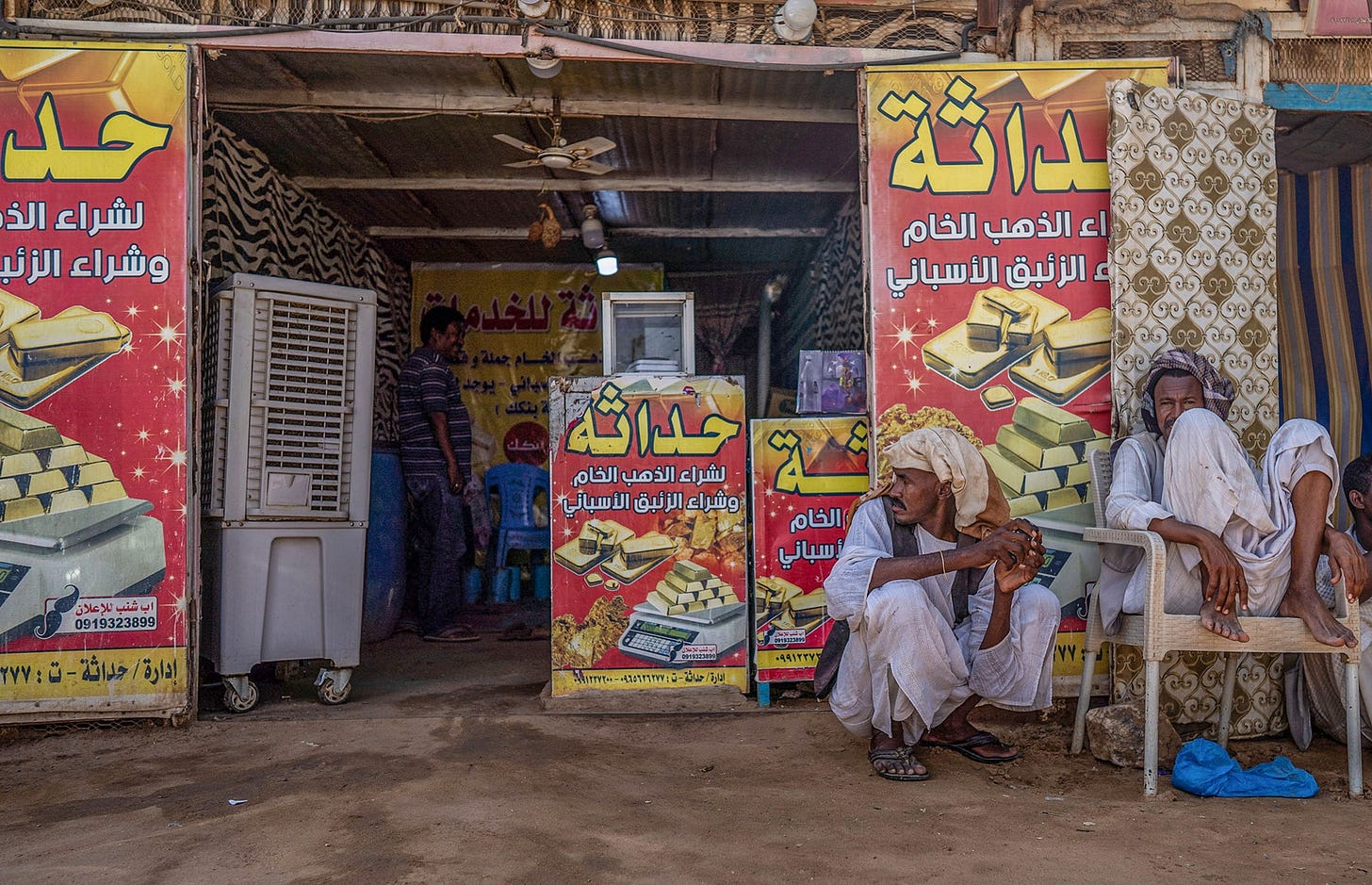










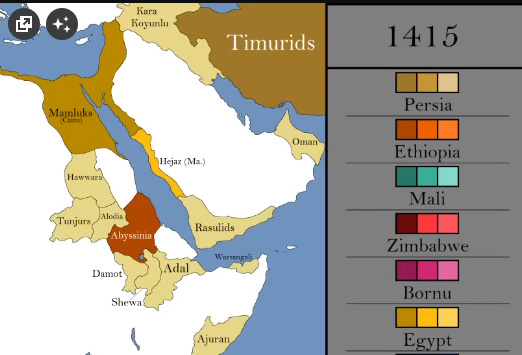

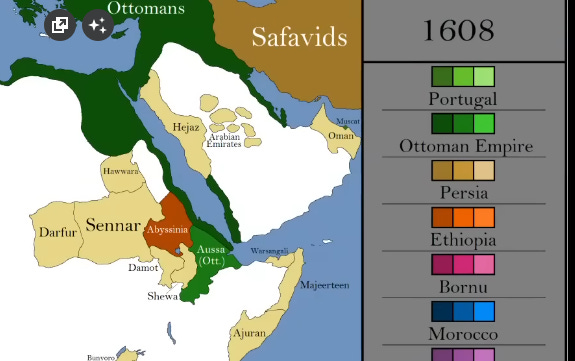
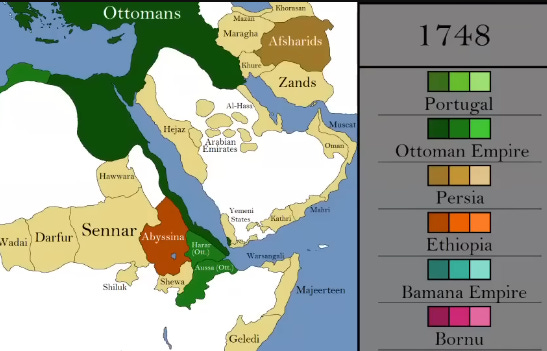
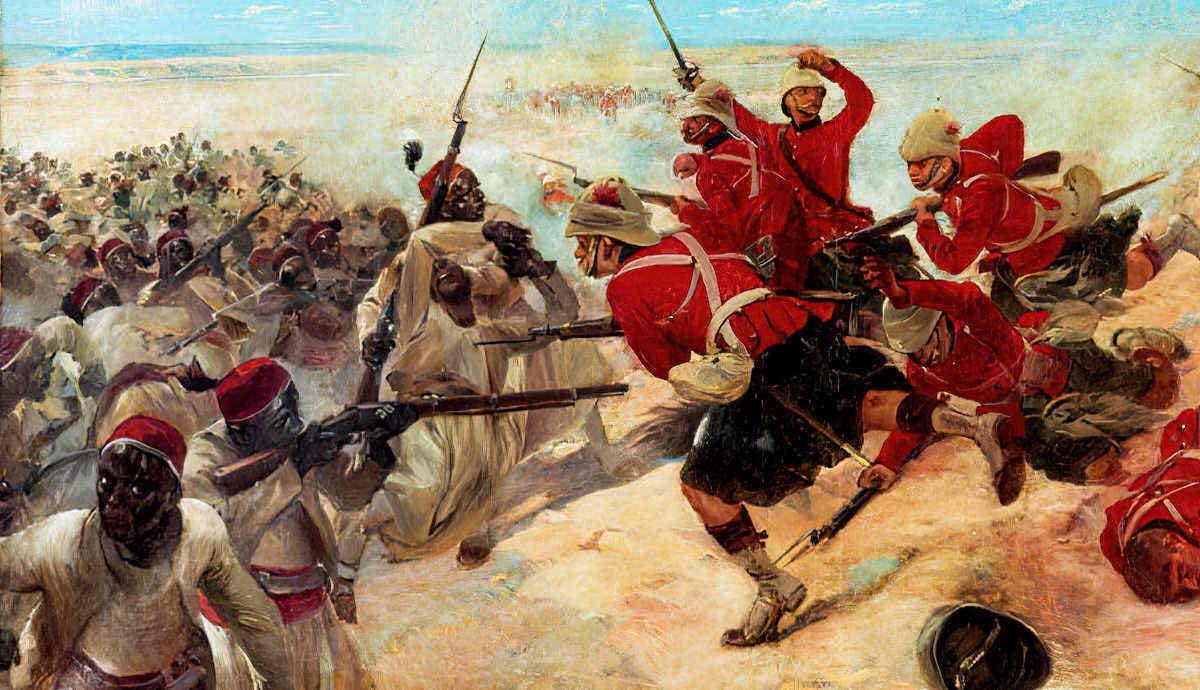




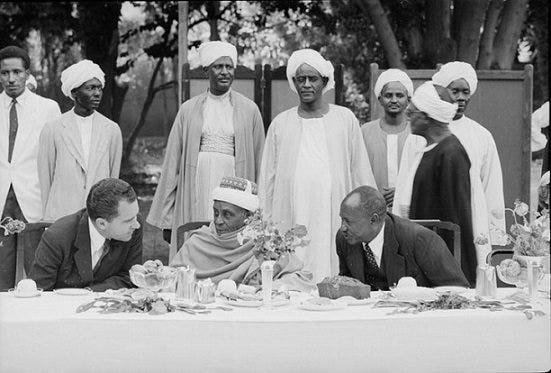
thank you so much for this comprehensive read. I value all the work you have been consistently doing in opening the channels for Africa to be in the conversation through a very nuanced way. This is all amplified by your work as a great starting point in getting Africa to the conversations we are having about the world. Especially the under-talked-about Sudan. Thank you.
I wrote this about wider patterns, and included Nubia. Possibly of interest https://www.ggd.world/p/slave-raiding-solidarity-and-status?r=zccyx&utm_campaign=post&utm_medium=web